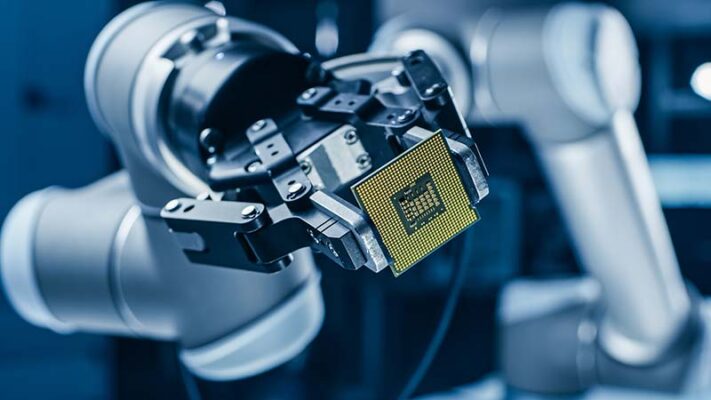iSIM and 2-Step Personalization: What OEMs Need to Know
By Amelie Huart
May 27, 2025
Estimated reading time: 3 minutes

Device makers and original equipment manufacturers (OEMs) are embracing integrated SIM technology (iSIM). This technology helps them develop cost-effective Internet of Things (IoT) devices to boost energy efficiency and optimize space.
iSIM security accreditations differ from those of traditional SIM cards and eSIMs. The GSMA Security Accreditation Scheme (SAS) has a two-step personalization process for iSIM to securely provision credentials for a device’s cellular network.

iSIM is a SIM form factor that implements a SIM inside a tamper-resistant element integrated into a system on a chip (SoC). Traditional SIMs and eSIMs require physical space for extra hardware. iSIMs, on the other hand, are embedded directly into the base cellular module, minimizing the device footprint.
iSIM will help enable new applications and possibilities. For example, size reduction allows for smaller IoT devices, such as:
Since there is no physical element, iSIM is more robust. It is ideal for industrial applications with vibrations and other challenges. In addition, iSIM is more ecologically beneficial because there is less hardware.
The iSIM ecosystem includes:

Another key element of iSIM is the need for personalization. With a traditional SIM, the manufacturer provides a SIM containing elements like MNO profile and connectivity.
With iSIM, the SoC is initially blank. The SIM OS, security credentials and MNO profile(s) must be loaded inside the SoC. Technical limitations prevent the SoC maker from completing this process inside its factory. Therefore, personalization should occur in the module factory or device maker factory.
The process of loading the SIM OS and security credentials is called two-step personalization. This requires collaboration between the SoC manufacturer and the SIM OS supplier. The GSMA defines two-step personalization and provides remote SIM provisioning and eUICC specifications.
After the SIM OS and UICC credentials are loaded onto the iSIM, MNO profile(s) can be installed. Through Telit Cinterion’s in-factory provisioning services, our customers personalize which profiles they want to use and when.
Two-step personalization defines how the SoC maker and SIM OS supplier SAS-UP certifications secure the iSIM personalization. Device makers and OEMs can use iSIM without GSMA certifying their factories.
Two-step personalization saves device makers and OEMs time and ensures the same security as traditional SIM card production. The MNO and other actors in the iSIM ecosystem also benefit by minimizing the effort required to become certified.
Although the certification processes for iSIM and eUICC are quite new, Telit Cinterion is ahead. We have valuable experience through proprietary iSIM implementation, including an internal pilot on one of our modules.
Telit Cinterion’s ME310M1 module is iSIM compliant. It enables secure, power-efficient IoT device deployments and low-data throughput IoT applications. As mentioned above, we also offer in-factory provisioning services.
See how Telit Cinterion can help accelerate your IoT project today with our IoT connectivity starter kit.